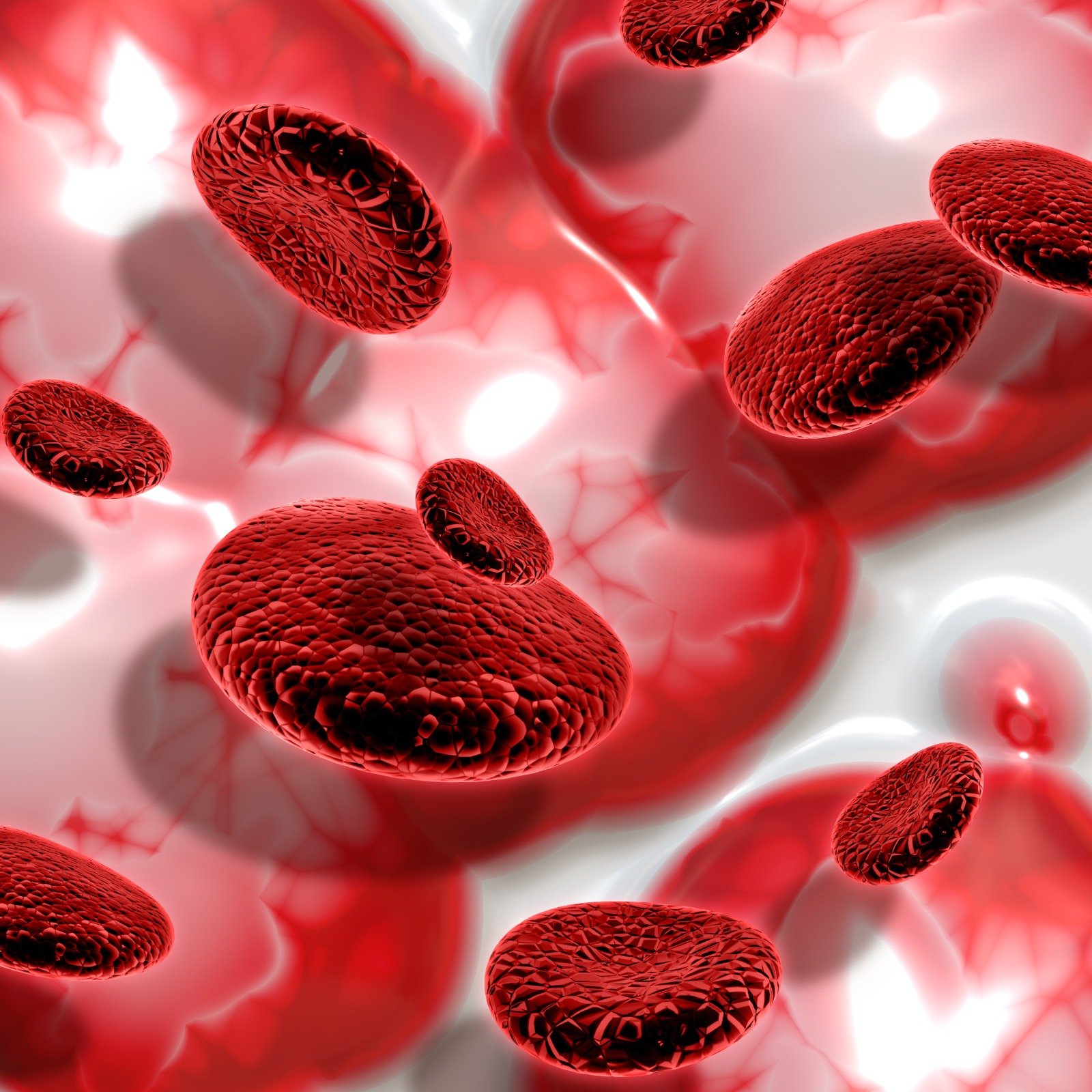
Blood is a specialized body fluid that transports oxygen and nutrients to the body tissues and removes waste products. It consists of two major components- Plasma (the fluid portion) and formed elements (RBCs, WBCs, and platelets). Blood disorders are a group of conditions that affect the components of blood—red blood cells, white blood cells, platelets, or plasma. This significantly disrupts the body’s ability to perform normal functions.
Blood disorders conditions can be inherited or acquired, and they vary in severity, from mild to life-threatening. This blog will cover inherited blood disorders – Hemophilia and Thalassemia.
HEMOPHILIA
Hemophilia is a rare inherited bleeding disorder that occurs due to the deficiency of plasma coagulation factors. In hemophilia, the blood fails to clot properly due to the deficiency or absence of certain clotting factors. Hemophilic patients have low levels of either factor VIII or Factor IX. Clotting factors are those proteins in the blood that are responsible for controlling bleeding and promoting coagulation.
80% of Hemophilia cases are inherited while 20% of cases account for acquired hemophilia which may be due to autoimmune disorders or mutations. They are more prevalent in males but are transmitted by the female carriers.
Classification of Hemophilia
Hemophilia is classified into two main types:
- Hemophilia A or Classic Hemophilia: This is the most common type and accounts for about 80-85% of all cases of Hemophilia. This type of Hemophilia is caused by a deficiency of clotting factor VIII (8).
- Hemophilia B or Christmas disease: This type accounts for about 15-20% of all cases of Hemophilia. It is caused by a deficiency of clotting factor IX (9).
Hemophilia primarily affects males, while females are usually carriers of the condition. This is because both types of hemophilia are X-linked recessive conditions and the defective gene is located on the X chromosome.
Symptoms of Hemophilia
The common symptoms of Hemophilia include:
- Excessive bleeding from mild cuts or injuries.
- Unexplained or frequent nosebleeds
- Easy bruising
- Bleeding into joints causes pain, swelling, and stiffness.
- Increased bleeding after surgery or dental procedures
- Hematuria (blood in urine) and gastrointestinal hemorrhage can sometimes occur.
The severity of hemophilia depends on the level of clotting factor in the blood. People with mild hemophilia have more clotting factor activity, while those with severe hemophilia have little or no clotting factor activity and will experience severe symptoms.
Management of Hemophilia
The primary goal in the management of hemophilia focuses on replacing the missing clotting factor and preventing bleeding episodes. Some of the management strategies are described below:
- Factor Replacement Therapy: This is the primary treatment plan for hemophilia to replace the missing clotting factor. The missing protein is infused into the bloodstream through intravenous injection. This replacement therapy may be required by patients on a regular basis (prophylactic treatment) to maintain clotting factor levels and prevent spontaneous bleeding.
- Recombinant Factor Concentrates: These are artificially manufactured clotting factors used in the treatment of hemophilia. They are safe and widely used.
- Plasma-Derived Factor Concentrates: These are derived from human plasma, and contain the necessary clotting factors.
- Desmopressin (DDAVP): For patients with mild to moderate hemophilia, desmopressin, a synthetic hormone can be given. Desmopressin stimulates the release of factor VIII from the body’s endothelial stores. This medication is not appropriate for the management of hemophilia B or for patients with more severe forms of hemophilia A.
- Gene Therapy: Recent breakthroughs in gene therapy have offered new hope for individuals with hemophilia, providing a potential pathway to improved treatment options and enhanced quality of life. The therapy focuses on introducing a functional gene that will produce the clotting factor into the patient’s cells. This aims to provide long-term relief from bleeding symptoms.
- Analgesics: For the relief of joint pain; a common complication of hemophilia, analgesics may be needed. It’s important to avoid nonsteroidal anti-inflammatory drugs (NSAIDs) as they inhibit Platelet function.
- Orthotics: To prevent injuries and spontaneous bleeding; Hemophilia patients may use orthotics and must take care to avoid injuries and trauma. They should wear protective gear during physical activities and avoid extensive exercises.
- Lifestyle Adjustments: For hemophilia patients, regular follow-ups with a hematologist are necessary. They should adopt a lifestyle that avoids unnecessary risk to prevent bleeding episodes. Avoidance of IM injections, immunization, a balanced diet, and maintaining a healthy weight are also beneficial in reducing the risk of bleeding.
THALASSEMIA
Thalassemia is a genetic blood disorder that affects the production of hemoglobin, the oxygen-carrying protein in red blood cells. It occurs because of the genetic mutation which leads to partial or complete failure to synthesize the globin chains of Hemoglobin. As a result, thalassemia patients have fewer healthy red blood cells in their bodies and experience anemia.
There are two main types of thalassemia:
- Alpha Thalassemia: This type occurs when there is a problem with the production of alpha-globin chains, which are components of hemoglobin. This occurs due to the deletion of one or more alpha-globin genes on Chromosome 16.
- Beta Thalassemia: This type occurs due to a defect in the beta-globin gene on Chromosome 11, leading to the production of defective beta-globin chains. Beta Thalassemia can be major or minor.
Symptoms of Thalassemia
The symptoms of thalassemia depend on the type and severity of thalassemia and the number of defective genes inherited. Thalassemia symptoms may include the following:
- Fatigue and weakness
- Anemia
- Pale and yellowish-colored skin due to a lack of healthy red blood cells.
- The destruction of RBCs in thalassemia can lead to jaundice.
- Bone deformities
- Enlarged spleen (splenomegaly)
- Stunted growth due to anemia and nutritional deficiencies.
Management of Thalassemia
The main goal of thalassemia management is to treat the anemia and prevent complications. The treatment approach depends on the severity of the condition and may include:
- Blood Transfusions: Regular blood transfusions are included in the primary treatment plan for individuals with major thalassemia. Transfusions help maintain healthy red blood cell levels, increase Hemoglobin levels, and elevate the symptoms of anemia.
- Iron Chelation Therapy: Frequent blood transfusions can lead to excess accumulation of iron in the body, which can damage vital organs such as the heart and liver. Iron chelation therapy helps to remove the excess iron by binding with it and ultimately eliminating it from the body. Common medications include deferoxamine, deferasirox.
- Bone Marrow Transplantation: For patients with Major beta thalassemia, a bone marrow transplant may offer a potential cure. In this procedure, the patient’s bone marrow is replaced with healthy bone marrow from a compatible donor.
- Splenectomy: In patients with severe splenomegaly, removal of the spleen (splenectomy) may be considered. This will help to reduce the destruction of red blood cells and improve overall health.
- Folic Acid Supplements: Folic acid is crucial for the production of red blood cells. Patients with thalassemia may be advised to take folic acid supplements which can help manage anemia.
- Management of Complications: Treatment may be required for complications associated with Thalassemia such as osteoporosis, diabetes, or heart disease. Regular monitoring and screening for these conditions are important for long-term health.
CONCLUSION
Blood constitutes approximately 7% of the total body weight and hence blood disorders are of primary health concern. Both hemophilia and thalassemia are chronic inherited blood disorders that require lifelong management to improve quality of life. Hemophilia is a bleeding disorder that primarily affects blood clotting and is managed through clotting factor replacement therapy. Thalassemia involves deletion or mutation of genes that lead to abnormal hemoglobin production and is managed through blood transfusions and iron chelation therapy.
These disorders are chronic and can lead to severe complications. However, gene therapy and stem cell transplantation offer hope for future treatment options, potentially offering long-term relief or even a cure. Early diagnosis, comprehensive medical care, and a personalized treatment plan are essential for individuals with these blood disorders.
By creating awareness and continuing research into these blood disorders, we can play our role in improving the quality of life and outcomes for those affected by hemophilia and thalassemia. Understanding these disorders not only empowers patients. By fostering a deeper understanding of these disorders, their management, and their etiology, we can not only empower patients but also ensure they receive the necessary support for a fulfilling life.
FAQS
- What is hemophilia?
Hemophilia is a genetic bleeding disorder where the blood fails to clot properly due to a deficiency of clotting factors.
2. What are the two main types of hemophilia?
a) Hemophilia A (Factor VIII deficiency)
b) Hemophilia B (Factor IX deficiency).
3. What are the primary treatment option for hemophilia?
The primary treatment options are the clotting factor replacement therapy and desmopressin (DDAVP) for mild cases.
4. What are the complications associated with thalassemia?
These include osteoporosis, diabetes, or heart disease; regular monitoring and management is essential.
5. What is Thalassemia?
Thalassemia is an inherited blood disorder that affects hemoglobin production, ultimately leading to anemia.
6. What are common symptoms of thalassemia?
The common symptoms include:
Fatigue, pale skin, slow growth, bone deformities, and enlarged spleen.
7. What is the main treatment options for major thalassemia?
The primary management plan for major thalassemia includes:
Regular blood transfusions, iron chelation therapy, and in some cases, bone marrow transplant.




